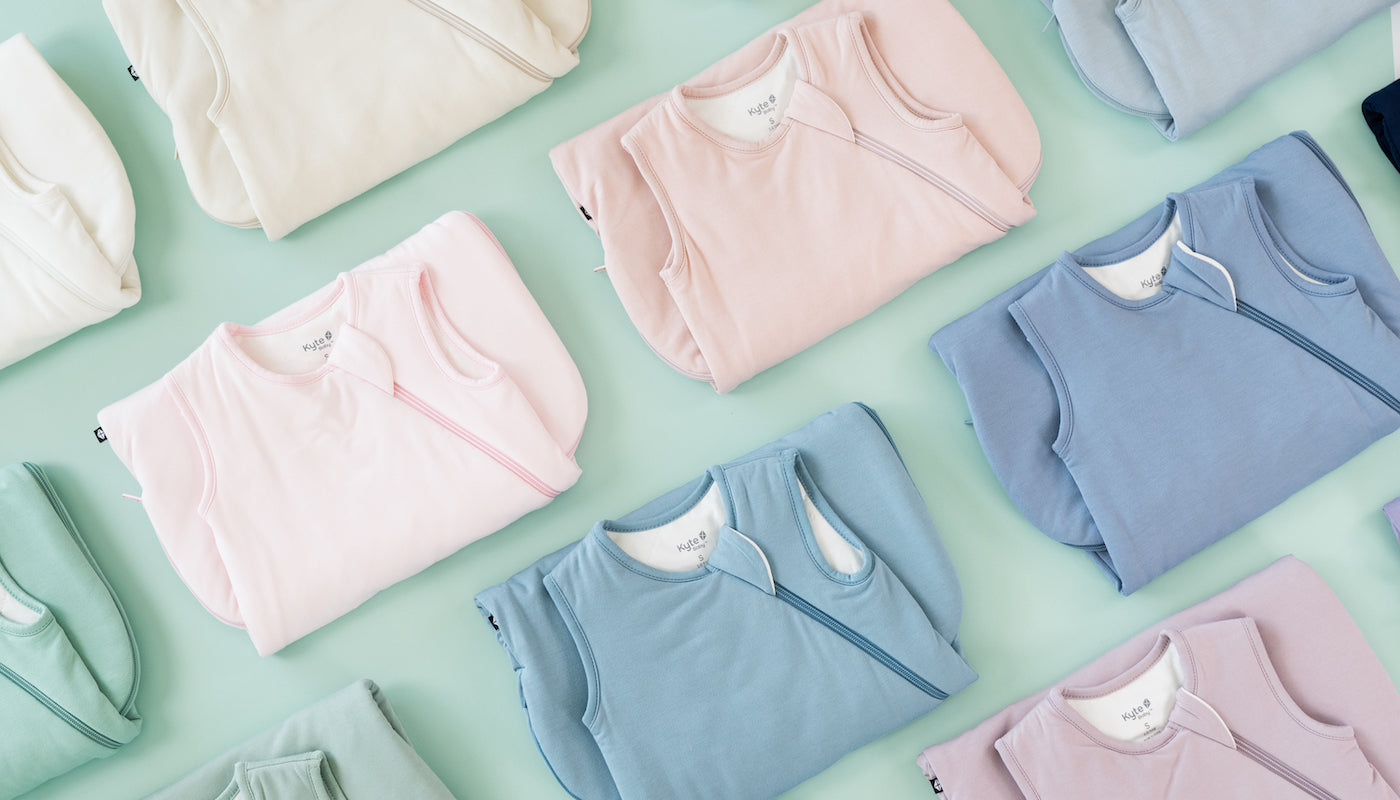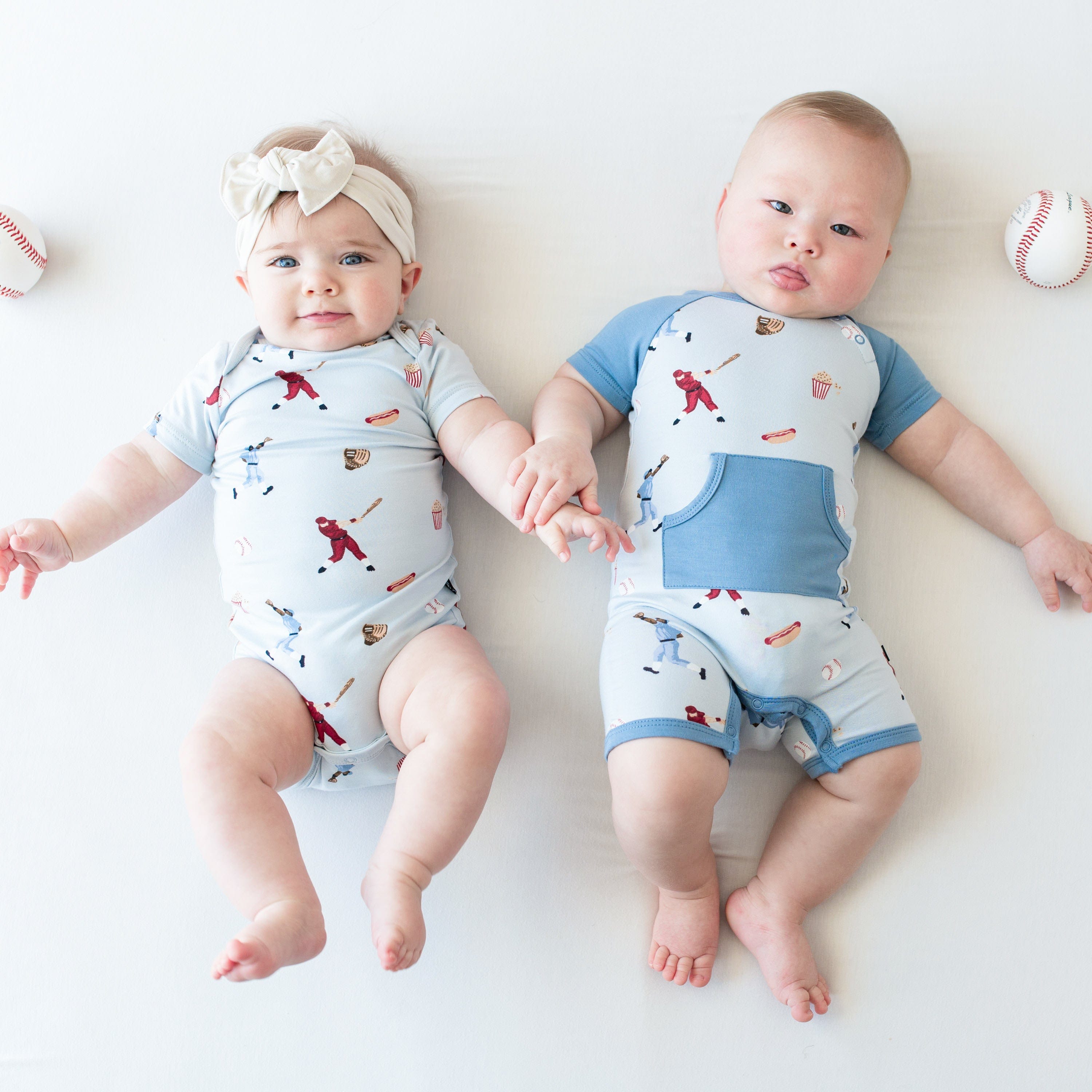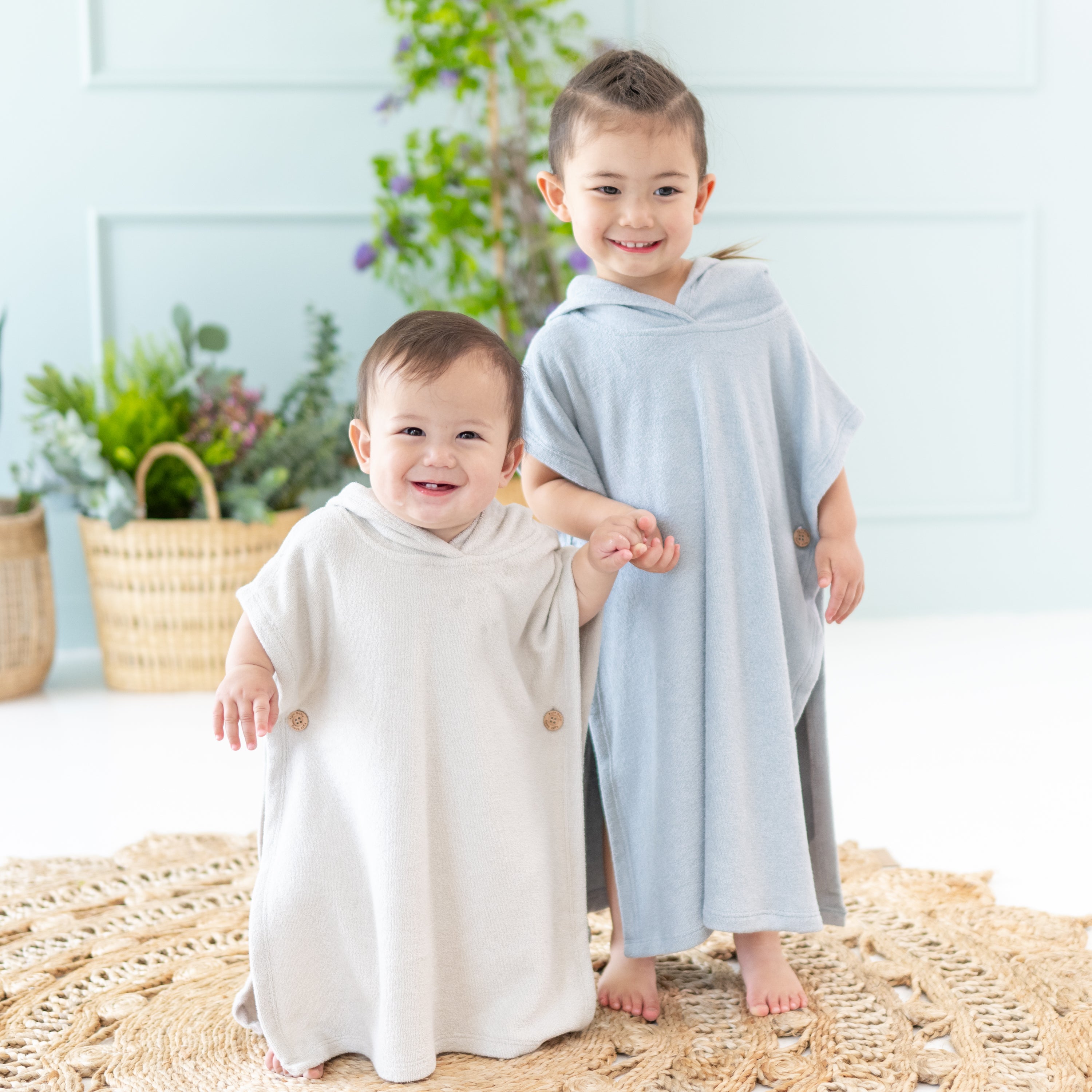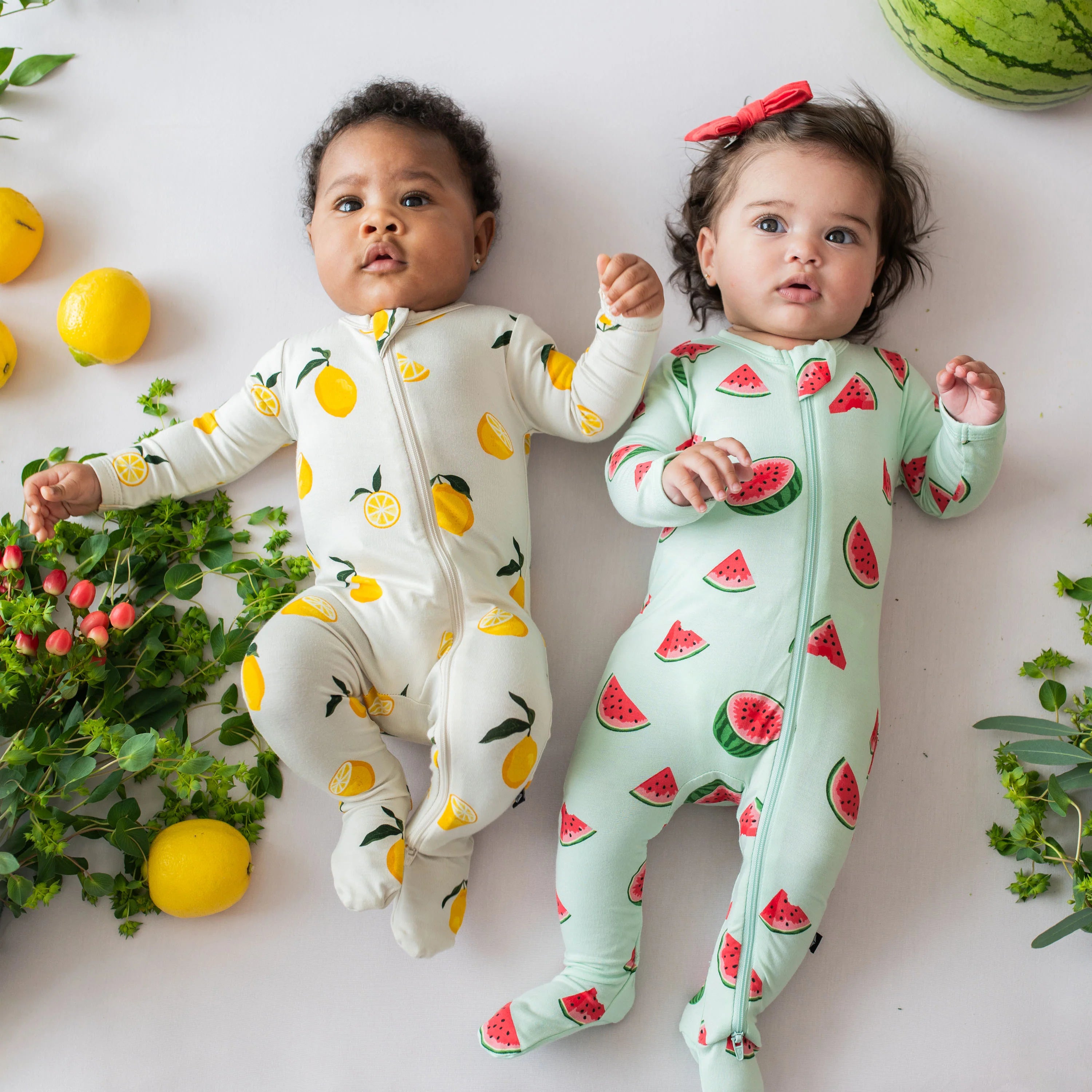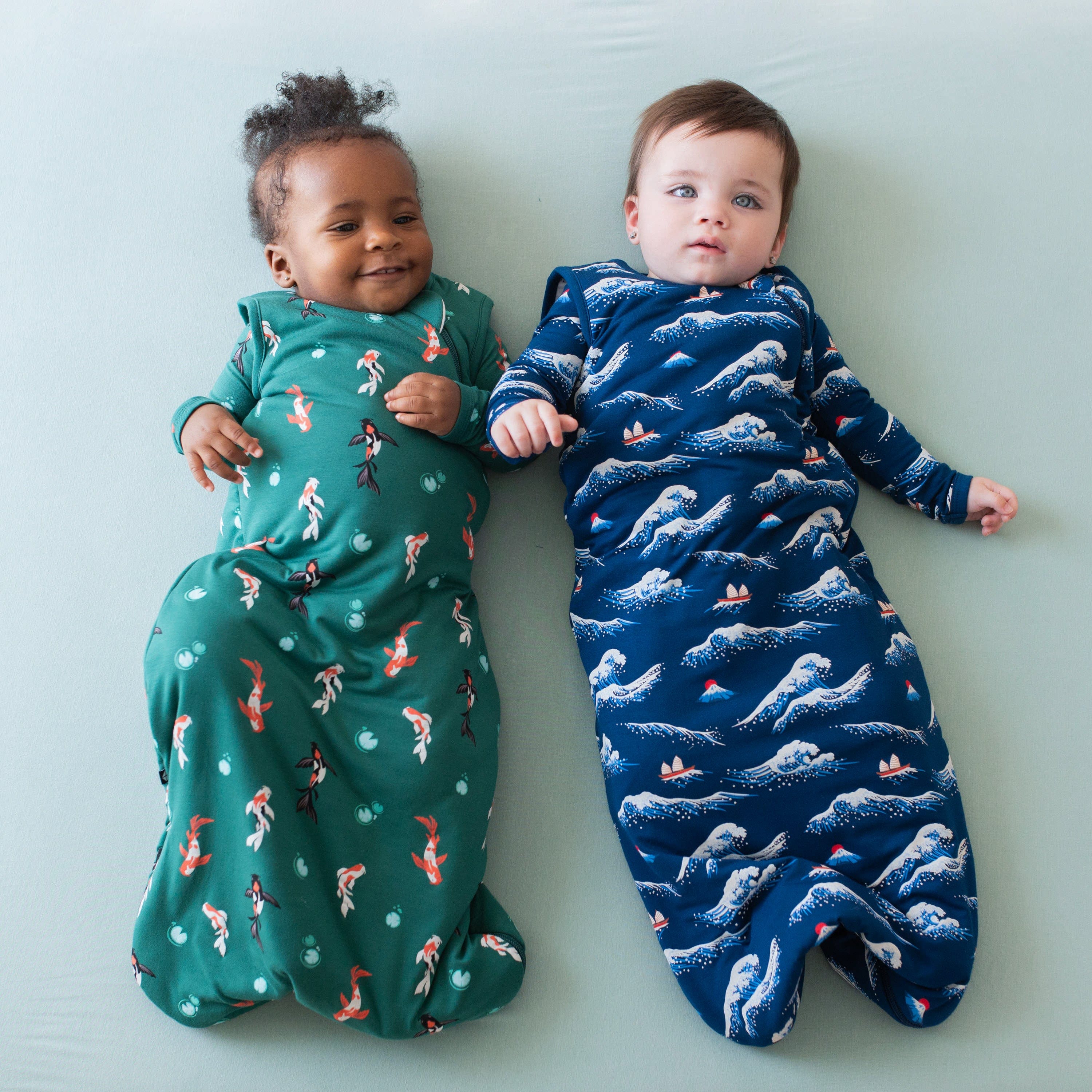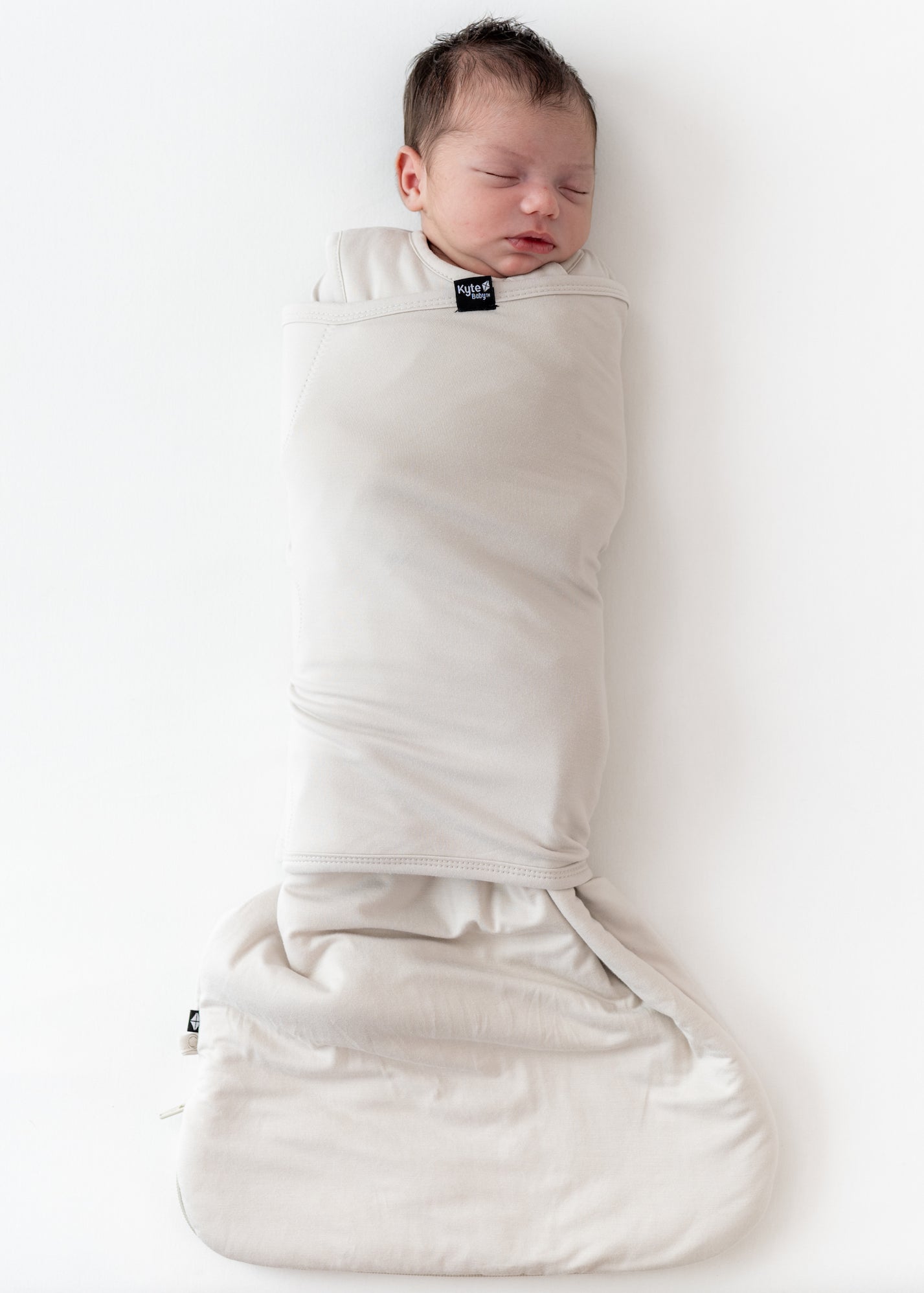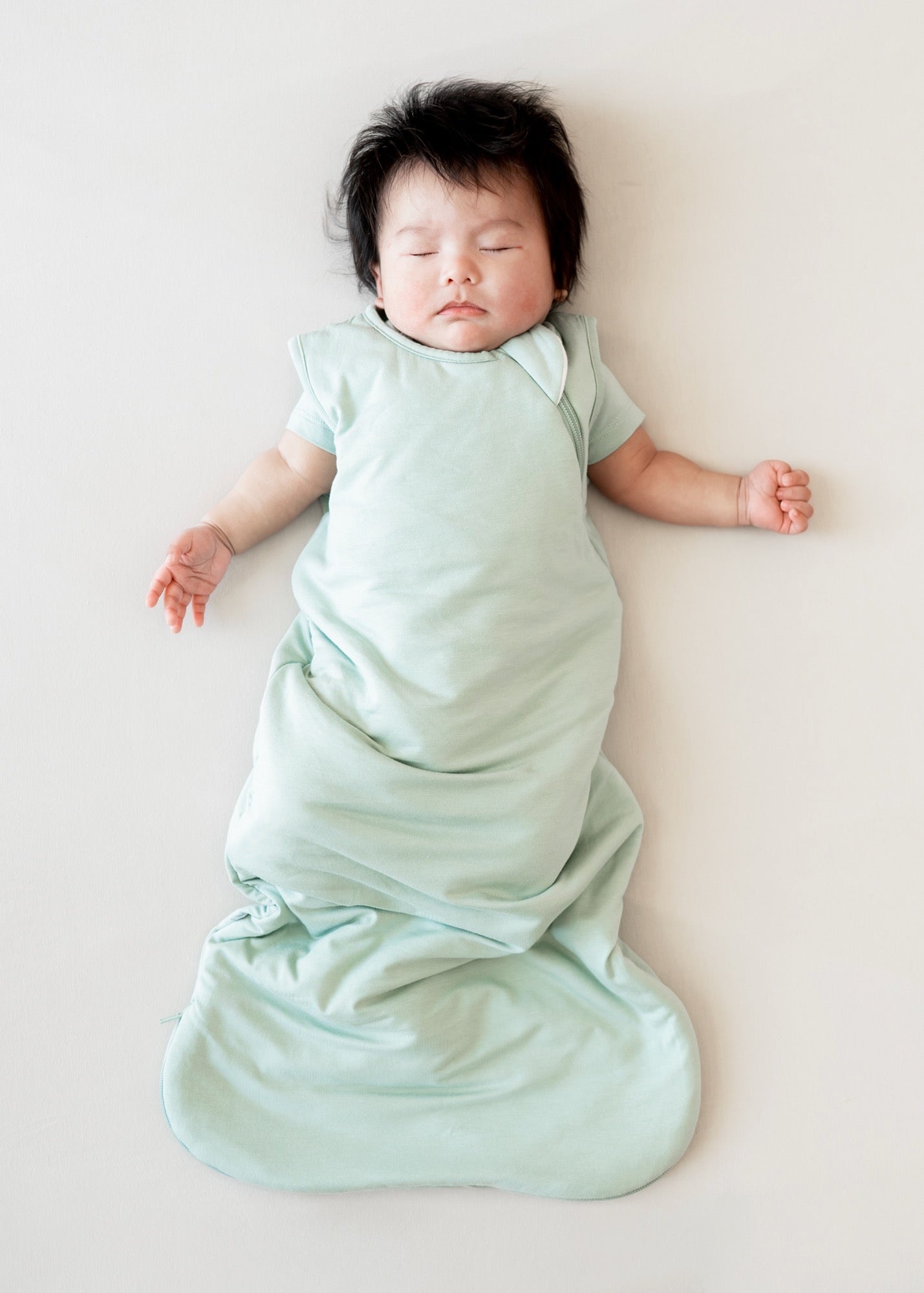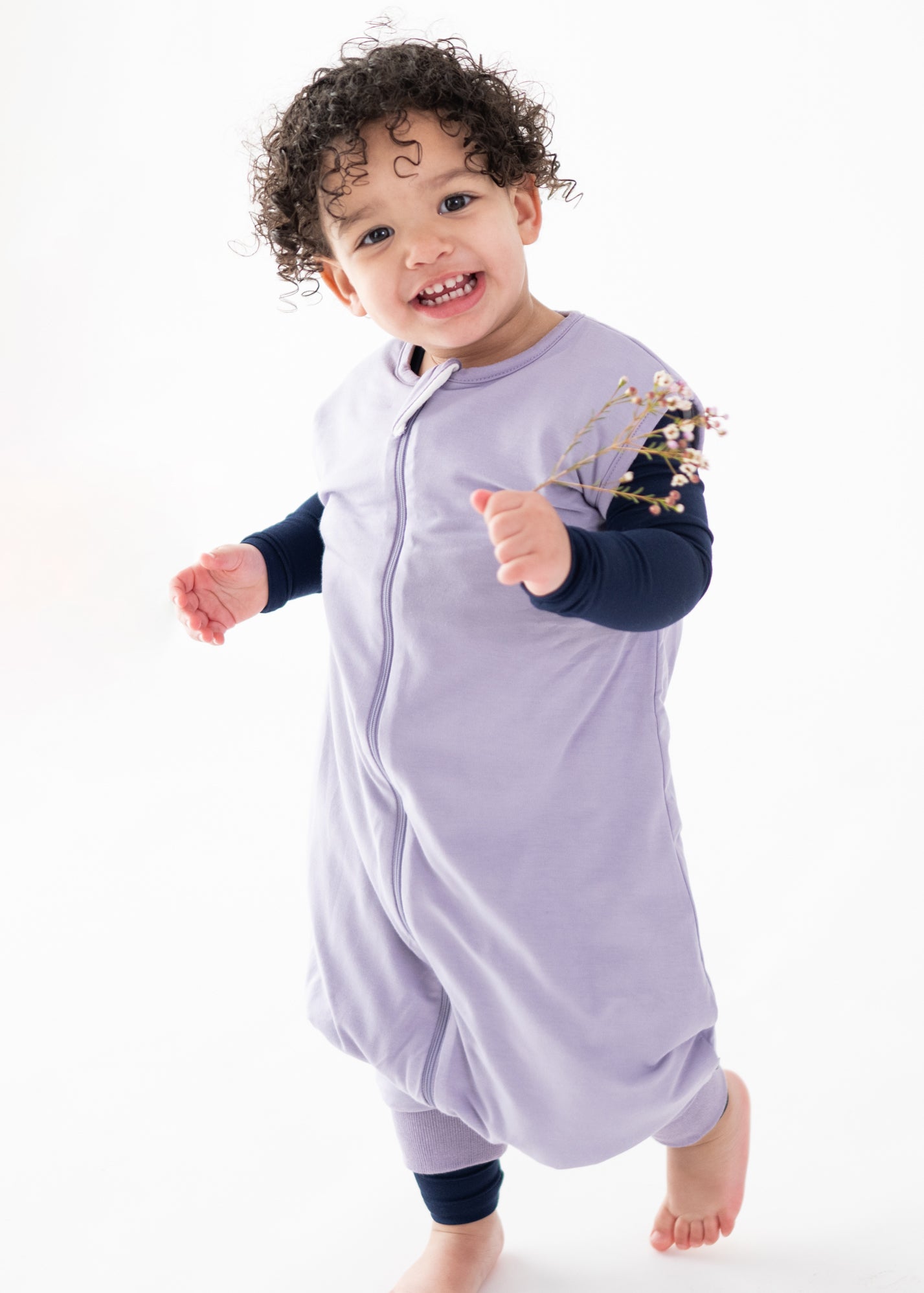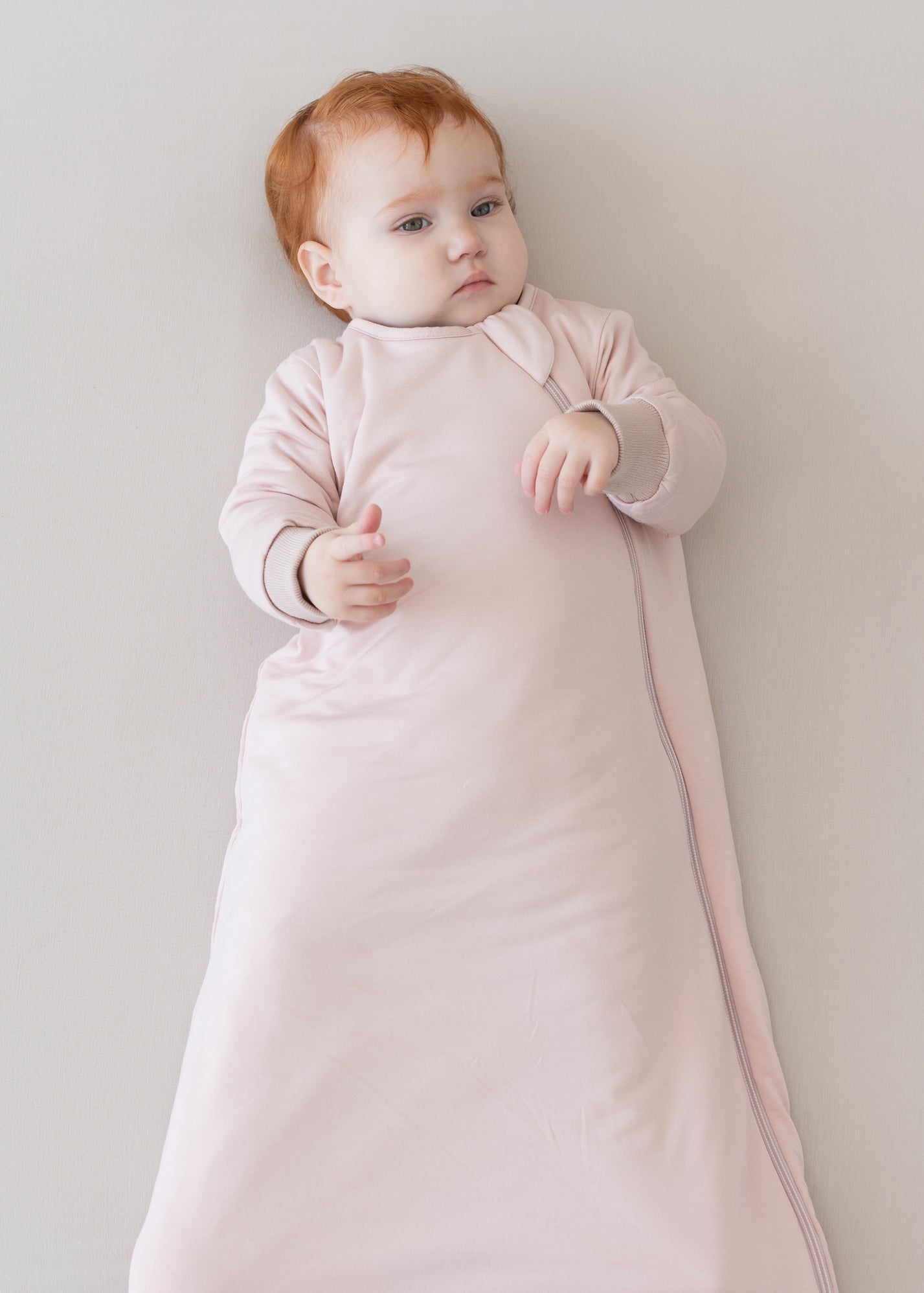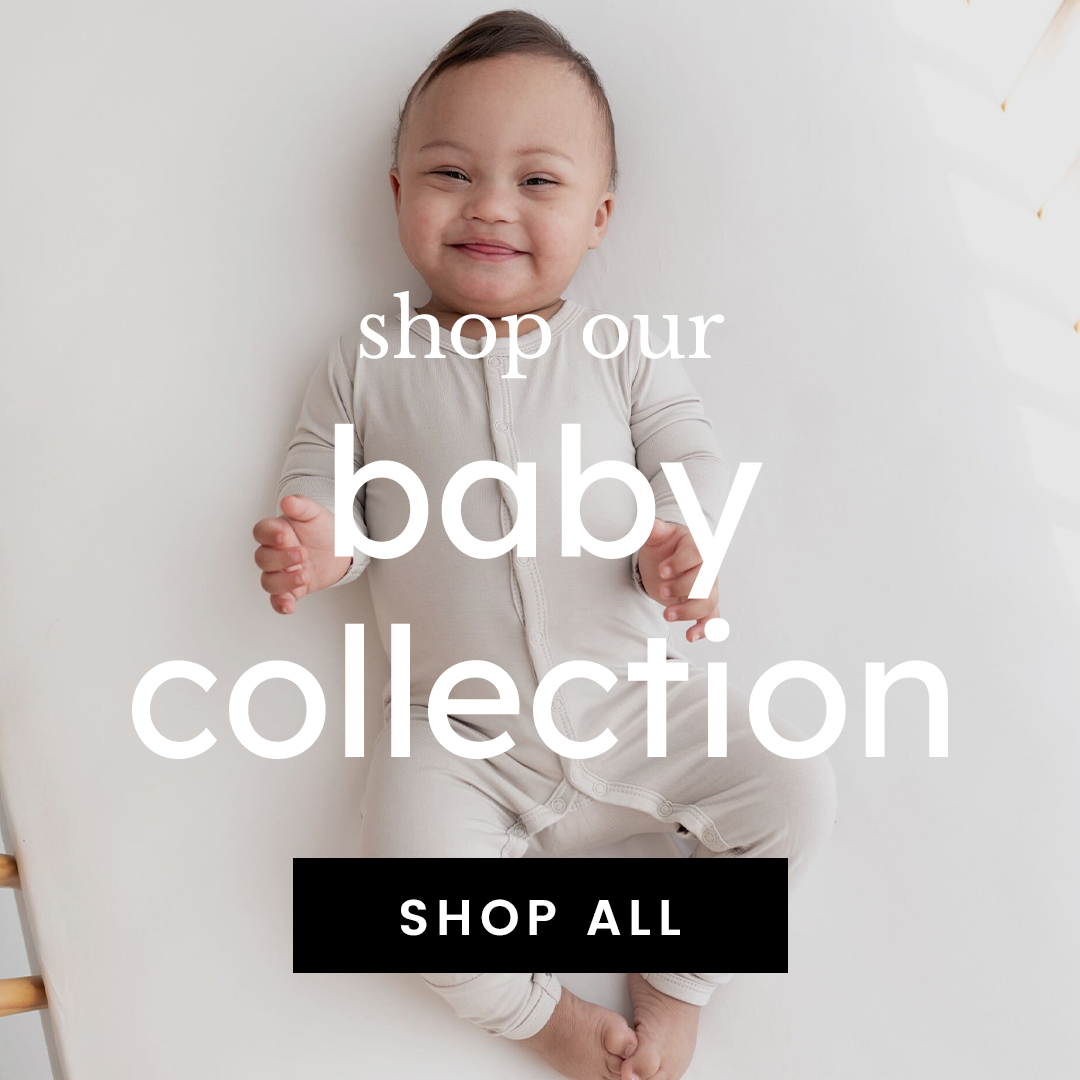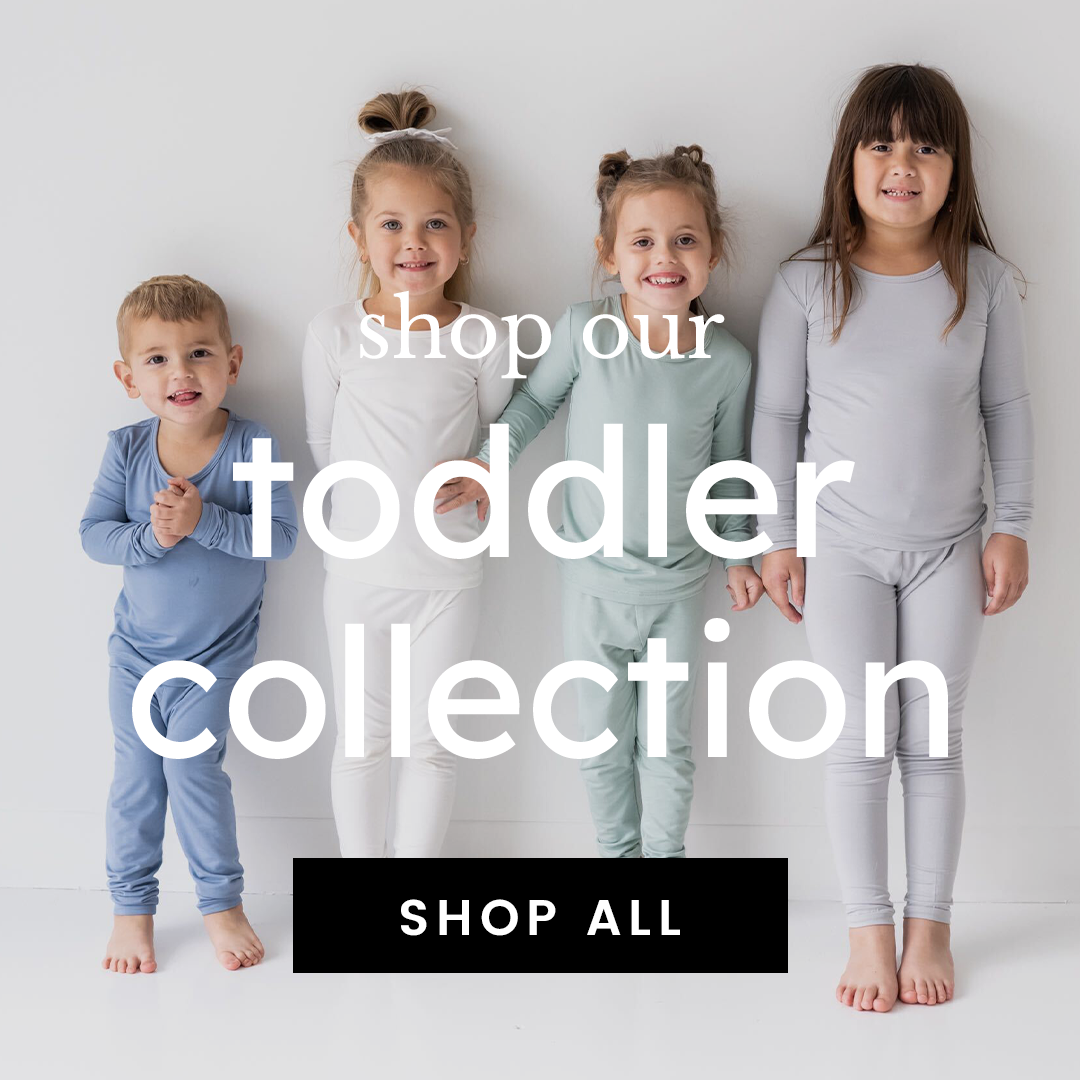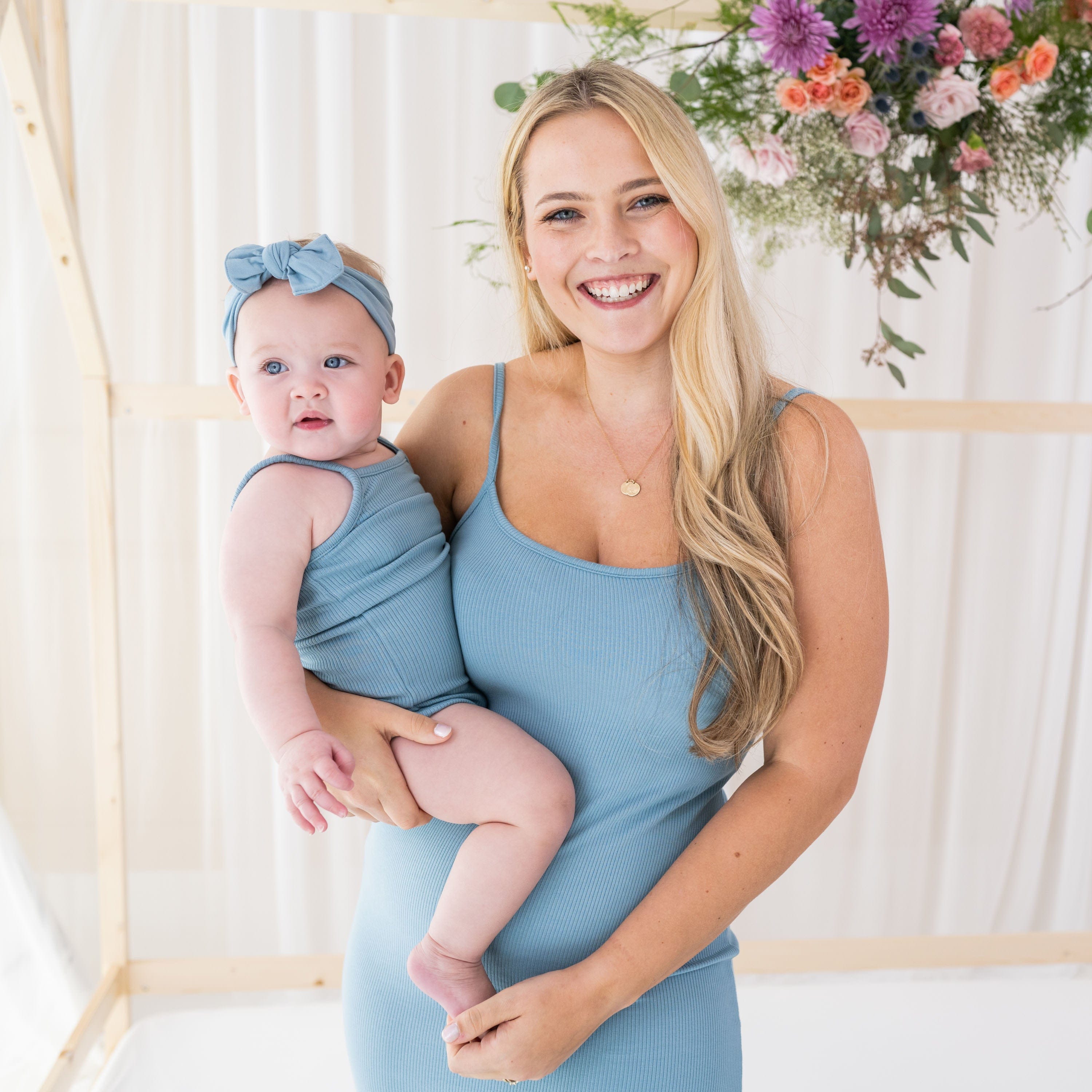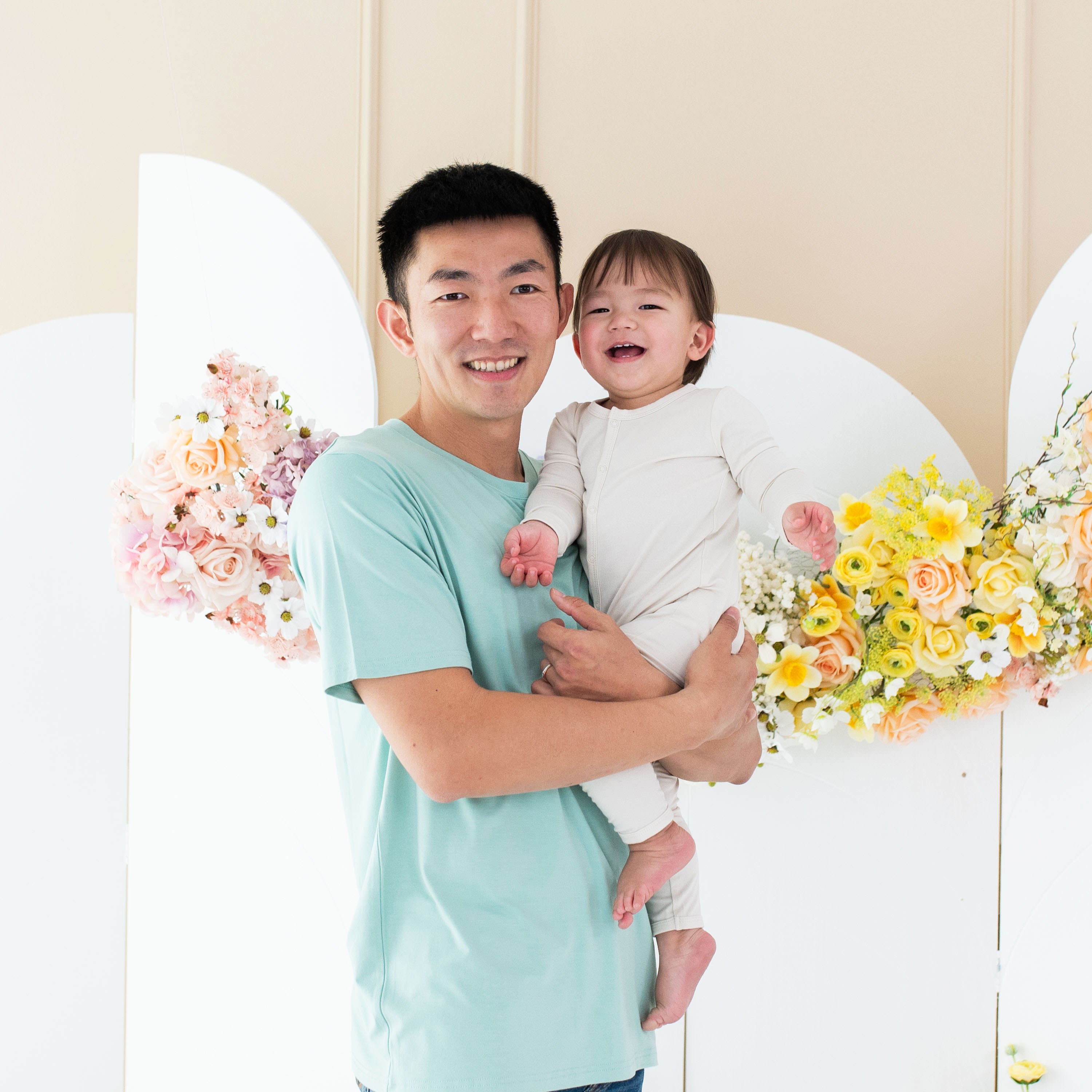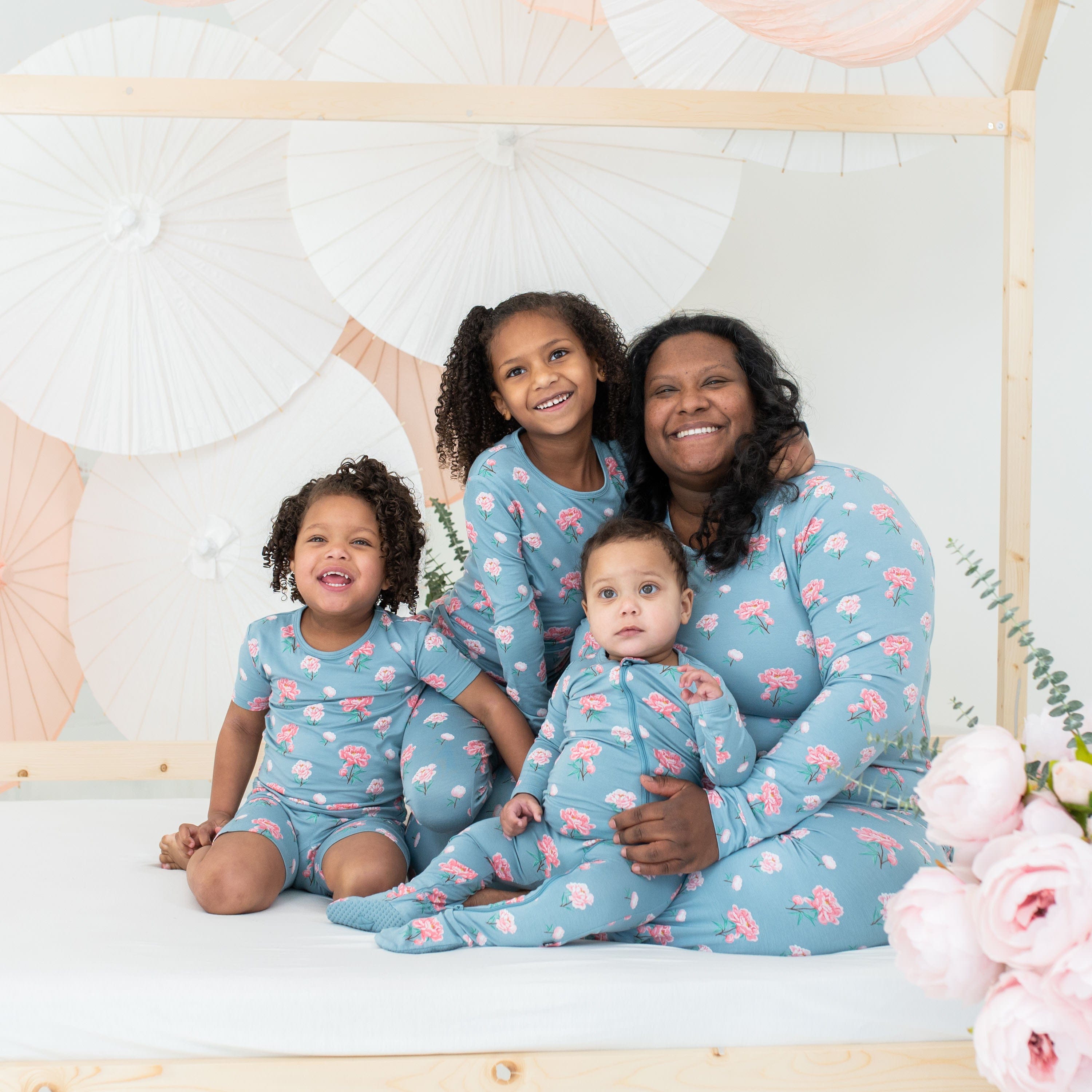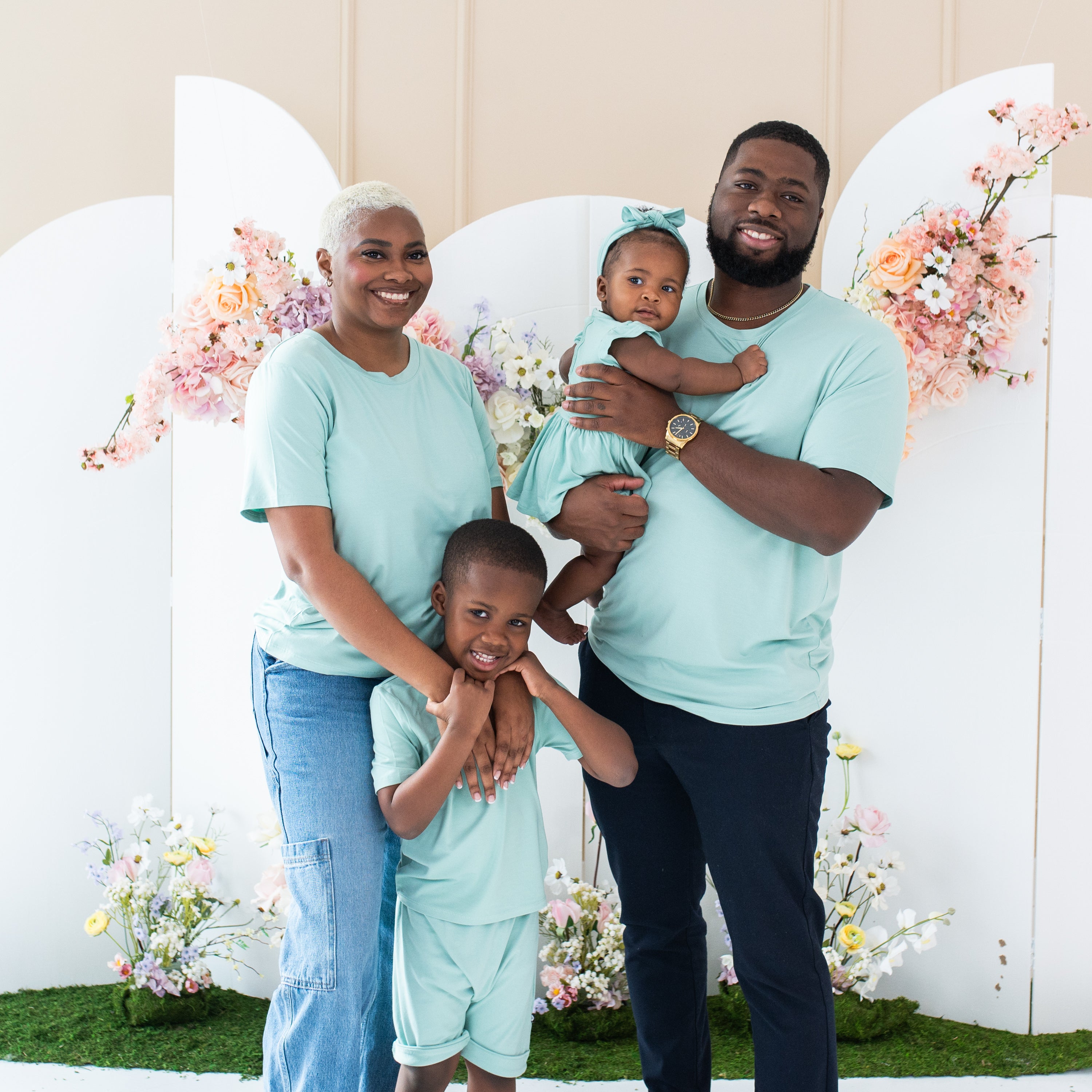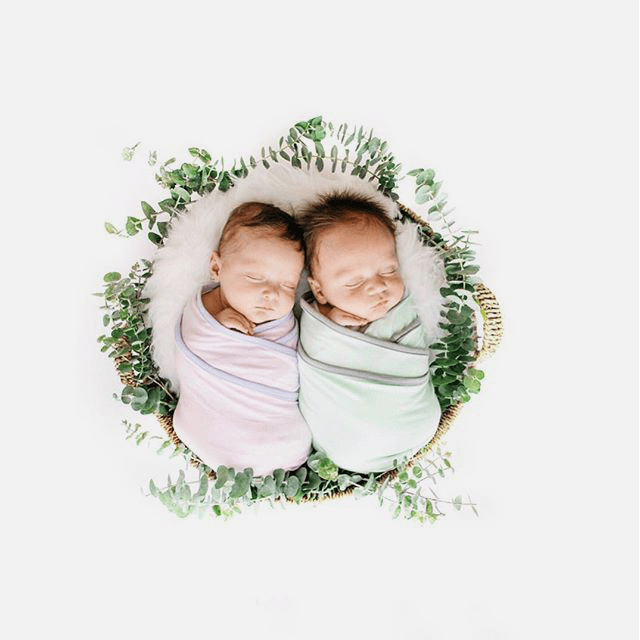Knowing what TOG is helps us keep our babies at a comfortable temperature while they are sleeping. A baby’s temperature, while they’re sleeping, is a common worry for parents, especially in the early days! It’s something we think about every time they wake up when we run down our mental checklist (like are they hungry, are they wet/dirty, are they too warm/cold).
This article will answer questions such as:
- Why TOG is important
- What TOG means
- How to choose a TOG
- What TOG baby should wear
- Ideal room temperature
- Dressing baby for sleep
All of this information will help you keep your baby sleeping well in the ambient temperature of their nursery while decreasing their risk of overheating. More and more parents are turning to sleep bags to keep their children safe and cozy when they are sleeping and cannot safely use a swaddle anymore. Loose objects such as sheets or blankets can get twisted and tangled which causes a suffocation risk for a young infant. This is why choosing a sleep bag is a great option!
What are the benefits of using a sleep bag?
First, it will keep your baby's temperature constant and prevent them from overheating. It also allows them the freedom to move around safely. Second, they are really easy to use and you do not have to undress them completely when feeding or changing their diaper in the middle of the night. Third, there are no additional blankets needed, as loose blankets are a safety risk. Bonus, they will not wake up cold because they have kicked the blankets off again. Lastly, it is a great sleep cue for your little one. Getting zipped up in their sleep bag is the equivalent of tucking them into bed.
They associate their sleep bag with going to sleep and that means more peaceful nights for you both! If you use it each night at bedtime, your child starts to associate it with nighttime, and can greatly improve their sleep both at nighttime and for naps. It’s also beneficial for keeping little feet from getting stuck in crib slats! It is also very easy to travel with and can make sleeping outside of the home a smooth transition which means a more enjoyable trip for everyone.
Remember that once your baby is showing signs of rolling, it is time to stop swaddling, and is the perfect time to make the transition into a Kyte Baby sleep bag. You can read more about the transition out of the swaddle in this blog.
Why is TOG important?
It’s important to pay attention to the TOG rating of your garment because babies do not regulate their own temperature well. We may know that we need to support them through this, especially as newborns, but it is easy to get confused about how to layer them appropriately! In short, TOG is simply a way to rate the warmth of products. More on that below!
While it may be tempting to think being warmest is the best, overheating is a risk factor for SIDS. So it’s important to be mindful of what TOG you’re using, how many layers you use, and what the room temperature is while they’re sleeping.
A little more information on babies and temperature regulation
During pregnancy, a baby’s body temperature is regulated inside the womb. The baby’s main method of warming himself outside of the womb is with fatty tissue, however, that requires a lot of energy which can stress him out and make him more tired.
Fun fact: a newborn is unable to “shiver” to warm himself!
According to the Children’s Hospital of Pennsylvania, babies do not adapt to changes in temperature as well or as efficiently as adults. Babies lose heat rapidly, as much as four times faster than adults! Premature and low birth weight babies have an even more difficult time regulating their body temperature because of their low amount of body fat. If their skin temperature drops even a degree below ideal (97.7 degrees F/36.5 degrees C), then their oxygen use increases by 10%. When they’re at the optimal temperature, they conserve energy which is very important when they’re sick or premature! A baby will lose up to 85% of his heat through his head (and they typically have some pretty big heads) so it’s important to keep a hat on when he is supervised to keep heat in.
Skin-to-skin contact is a proven way to improve temperature regulation in babies. This is especially important right after birth, in the early days of bringing a baby home, and after bathing your baby! However, babies may not totally regulate their temperature naturally on their own until they are closer to 18-24 months old and are still more sensitive to changing temperatures than adults.
Why is temperature regulation important and what is the ideal room temperature for sleep?
Just like you, your baby will be uncomfortable if they’re too hot or too cold. They obviously cannot tell you this though. If you are too hot or too cold, you add a layer or shed a layer. Not so easy for our little ones to do!
Here are some tips for keeping a baby’s temperature consistent:
- Keep the room between 68-72 degrees (purchase an indoor thermometer for the nursery if you need to; some video monitors will display room temperature but are not always accurate)
- Judge by how you feel (are you too warm? Then your baby likely is too!)
- If you add a layer for yourself, add one for your baby
To check if your baby feels too cold or too hot, feel the back of their neck, back, or chest. Do not use extremities to judge body temperature because there is less blood flow and hands/feet will always feel naturally cooler than the rest of the body.
Signs of being too warm:
- Sweating
- Damp hair
- Heat rash
- Red cheeks
- Heavy breathing
If your baby is too cold, they may be harder to rouse or lethargic and have a decreased appetite/difficulty eating or not wanting to eat at all.
Fun Fact: tog is derived from “toga”, a Roman garment.
What is TOG and what does that have to do with temperature regulation?
TOG is the measure of thermal resistance. It stands for Thermal Overall Grade and is the standard of measure for how much heat a garment retains. In other words, this is how warm a garment keeps you; you’ll see this often on duvets, baby sleepwear, socks, and even carpets! The higher the TOG, the warmer it will keep you or the more heat it will retain.
Because babies do not generate heat easily but absorb it very well, you have to be mindful of how much heat their clothing is going to retain. Since it’s unsafe to keep blankets or loose clothing in the sleep space with your baby, we have to use things like wearable blankets or sleep bags to keep them warm and safe! Kyte Baby offers three different TOGS for Sleep Bags: 0.5 TOG, 1.0 TOG, and 2.5 TOG. Here’s a little more about the different TOGs.
- 0.5 TOG: think of this as the shorts and tank top of your baby’s sleep attire. It is a lightweight version similar to the swaddling blanket. This is best used in really warm climates/rooms. If you would be comfortable with only a light sheet, then a 0.5 TOG would be perfect for your little one.
- 1.0 TOG: when your baby starts to wear long-sleeve onesies or footies outside, then they will appreciate the blanket feel of this TOG.
- 2.5 TOG: this is the sleep bag that will keep your little one all snuggly and cozy during those colder winter months when the nursery temperature may dip into the low 60s (degrees Fahrenheit).
What TOG should baby wear?
The TOG should be chosen based on the temperature in your child’s nursery, not the temperature outside. If it stays in the recommended range of 68-72 degrees F then using a 1.0 TOG would be appropriate. If it is on the cooler side, then you will want a higher TOG rating; if it stays warmer than that, you will want a lower TOG rating. While the outside temperature can change the inside temperature, you don’t want to choose a TOG based only on what season it is. If it is 50°F outside, but 72°F inside, you would choose a 1.0 TOG sleep bag.
You would also choose a higher TOG if your baby sleeps in thin clothing or maybe just a bodysuit and diaper. You could choose a lower TOG if you layer the baby in a bodysuit and sleeper. The 1.0 TOG is known as the “universal” or “year-round” TOG because you can always add more layers to keep babies warmer or take away a layer to keep them cool.
What does TOG mean in a baby's sleep bag?
While TOG measures how insulating a sleep bag is, it also takes into account the type of material a sleep bag is made of as different materials provide warmth at different levels of thickness. To give you an idea about TOGs, think of 1.0 TOG as one layer of a cotton blanket, then 4.0 TOG (which is the highest-rated for baby sleep) is like layering with four blankets.
From Babyology, “TOG ratings were introduced in an effort to reduce the incidence of Sudden Infant Death Syndrome, also known as SIDS. The ratings are designed to keep little ones of 4kg or more at a comfortable temperature through the night, and were introduced to help prevent babies from becoming overheated.”
Kyte Baby sleep bags are made of 97% bamboo which makes it breathable, comfortable in any temperature, absorbs and evaporates humidity, and is hypoallergenic.
Kyte Baby sleep bags come in 0.5 TOG (for heatwaves, very warm rooms), 1.0 TOG (year round with room temp around average 70 deg, and 2.5 TOG (for below 68 deg room temperature for sleep). You may need a different TOG for daytime sleep than nighttime sleep, so keep that in mind as well!
Dressing baby for sleep
A good rule of thumb is to dress the baby in one layer more than you are wearing as an adult. As parents, we can be guilty of dressing our babies too warm with too many layers! Using an appropriate TOG with 1-2 layers of clothing is a great alternative. But remember that each baby is different, so these are just guidelines and you should always check your baby to determine the appropriate TOG or how many layers to use with your sleep bag!
Just like adults can be sensitive to temperature changes, so can your baby. If two adults are sitting in a 70°F room, one could be perfectly comfortable and the other could be bundled under blankets. This is why TOGs and layering are just general recommendations. They will all have unique and individual preferences for what temperature they sleep best in!
Fun Fact: when babies are too warm when they’re sleeping, it generally presents as restlessness and increased wake-ups.
Always check in with your baby to see if they run hot or cold to determine how to dress your baby for sleep. For babies, in order to follow safe sleep rules, there should be nothing else in the crib with the baby. That means, alone, on a flat and firm crib mattress with a tight fitted sheet-- no blanket while in a crib. A sleep bag (or wearable blanket) is a great (and safe) way to keep your little one cozy and comfortable on both warm and cold nights!
If you’re swaddling your baby, keep in mind the number of times your baby is wrapped with the swaddling blanket or product to determine how many layers to dress your baby in while sleeping.
Here’s a helpful guide for layering with a Kyte Baby sleep bag.
You can also double up on layers. For example:
- 1.0 TOG with a short or long sleeve onesie AND a footie if the temperature is lower than 69°F
- 2.5 TOG with a short or long sleeve onesie AND a footie if the temperature is lower than 61°F
You can do fewer layers as well. For example:
- 0.5 TOG with only a diaper if the temperature is warmer/baby is sweating
- 1.0 TOG with only a diaper if the temperature is over 75°F
Once a toddler has transitioned into a bed, then you can use one of our Kyte Baby blankets! For reference, Swaddle Blankets are 0.5 TOG, Baby Blankets are 1.0 TOG and Toddler Blankets are 1.0 TOG and 2.5 TOG, Youth Blankets are 1.0 TOG and 2.5 TOG, and Adult Blankets are 1.0 TOG, 2.5 TOG, and 3.5 TOG.
It is also important to know that different materials (cotton vs bamboo) will retain heat differently, so you may have a 2.5 TOG bamboo sleep bag and a 2.5 TOG cotton sleep bag that feels like different thickness levels. Bamboo is 3 degrees cooler than cotton so our sleep bags take that into account!
From Babyology, “It’s important to know that a thick fabric does not necessarily automatically correspond to a higher TOG rating. The rating has to do with the amount of thermal insulation generated, which explains why one of your babies' sleeping bags may feel thicker but have a lower TOG rating than a thinner (but warmer) one.”
This blog will help you transition your baby from a summer TOG to a winter TOG!
There is also no age limit on using a sleep bag. If it fits, your child can wear it which is helpful if keeping climbing toddlers in their crib until they’re ready to transition to a toddler bed. How should your sleep bag fit? Our sleep bags come in XS to XL sizing, which means they'll fit your child from 7-50 pounds. Here’s a helpful sizing chart!
First, you will want to make sure it is appropriate for your baby's age and weight. The armholes should be snug enough that your baby cannot pull their arms into the sleep bag. The neck hole should not be so big that your baby’s head can slip down into the sleep bag. Also, any zippers should have a covering so as not to snag your little one’s skin. The actual length of the sleep bag does not matter so long as the neck and armholes provide a good, safe fit for your baby! The length of the sleep bag (or the larger sizes) does not change the TOG rating or how warm the sleep bag is.
All Kyte Baby sleep bags are roomy in the leg/hip area so that they are “hip healthy” meaning knees can bed, and hips easily flex/open to decrease the risk of hip dysplasia. The inside of the 0.5 TOG looks like the swaddle blanket, but the inside of the 1.0 and 2.5 TOG are quilted.
What if your baby is sick?
If you have a little one who is running a fever and is generally just not feeling well, a 0.5 TOG sleep bag would be good to have on hand to keep them from getting too warm while they’re sleeping!
More about a 0.5 TOG sleep bag: it is not recommended to use if the temperature in the room is below 68°F because you will have to use too many layers under the sleep bag and that can make your child uncomfortable, even if they are “warm” enough.
Why choose bamboo sleep bags?
Bamboo sleep bags are breathable which means they dissipate heat more efficiently to keep your baby cool (which is important when overheating is a risk factor for SIDS). Kyte Baby sleep bags are also sleeveless which allows for good airflow while your little one is sleeping. They are great for sleep because they naturally wick moisture away from the baby, release heat, regulate temperature, insulate efficiently, and dry quickly which is so important if you’ve got a baby who likes to drool a lot!
Sleep bags assist in temperature regulation while keeping your baby safe in their sleep space. When we say “temperature regulating”, we mean that it will keep your baby cool when they’re hot and warm when they’re not. Neat, huh?
Kyte Baby sleep bags are not “weighted”, however, the material itself and the thicker/heavier the TOG, the more “substantial” the sleep bag is. It will naturally feel heavier than other materials!
How many sleep bags do you need?
It is beneficial to always have an extra on hand. Since it is best to let your Kyte Baby sleep bag air dry, it can take a little bit of time to fully dry which means you may not have a sleep bag ready for nap or bedtime! Consider the changes in room temperature for sleep when stocking up on sleep bags and consider buying extra if your child goes to daycare to improve their sleep in that setting.
Remember that Kyte Baby sleep bags are generous in length so as long as it fits around the neck and arms, you can usually get quite a bit of wear out of any given size. Sizing up in a sleep bag is not always necessary.
In the United States, you generally do not need a TOG higher than 2.5. With all of the different options of TOG and layering, you can dress your baby for sleeping in a sleep bag year-round. For any questions about your specific situation, join Kyte Club on Facebook to get feedback from other moms who also love Kyte Baby sleepwear and sleep bags!
Author Bio: Ashley Olson is a certified pediatric sleep consultant, owner of Heaven Sent Sleep, and passionate about helping new parents, experienced parents, and desperate and sleep-deprived parents form healthy sleep habits for their children.
She has over 3 years of experience in working with families and has completed over 150 hours of coursework plus continuing education related to infant and toddler sleep. The focus of her work is on fostering a routine that grows your bond with your child while improving their sleep habits. She specializes in custom sleep plans and one-on-one support in changing sleep practices!
